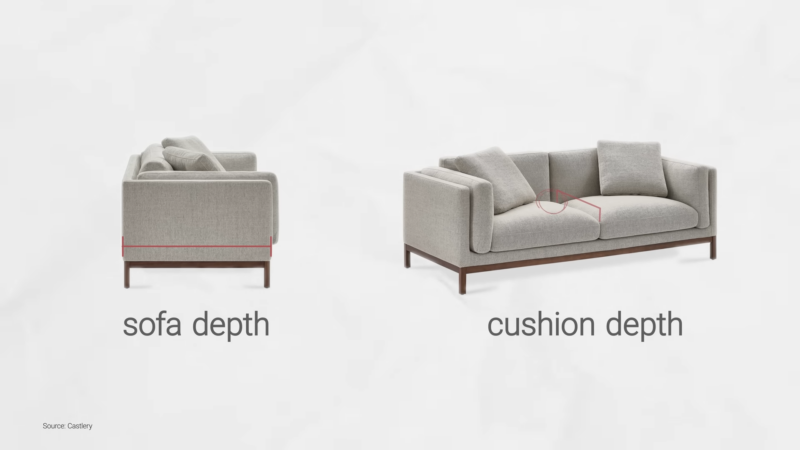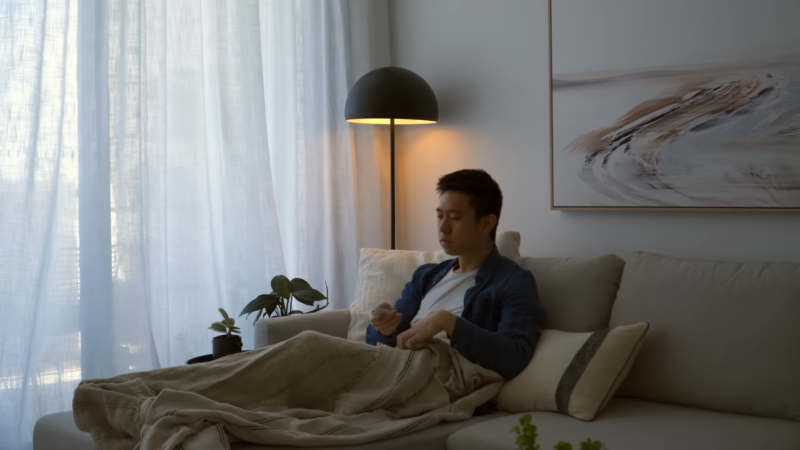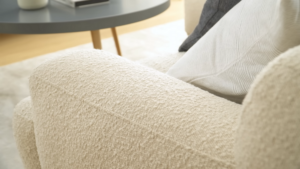Choosing the right sofa size is crucial for both aesthetics and functionality.
Key considerations include:
- Room Dimensions
- Traffic Flow
- Intended Use
These have the task of ensuring the sofa fits harmoniously in the living space.
With that in mind, I would like to discuss everything relevant you need to know when selecting the right sofa size.
Measuring Your Space

Start by measuring the length, width, and height of the room. Accurate measurements are essential for selecting a sofa that fits well without overwhelming the space.
Consider architectural features such as doorways, windows, and any built-in furniture that might affect the placement of the sofa.
Having a detailed floor plan helps visualize how different sofa sizes and shapes will fit in the room.
Consider Traffic Flow
Maintaining adequate traffic flow is essential for a comfortable and functional living space.
Ensure there is at least 30–36 inches of walkway around the furniture to allow for easy movement.
It is particularly important in high-traffic areas, such as between the sofa and the coffee table or other major pieces of furniture.
Unobstructed pathways prevent the space from feeling cramped and ensure a smooth flow of movement throughout the room.
Sofa Dimensions
Let me discuss what you should be aware of when it comes to dimensions.
Length
A general guideline for choosing the length of a sofa is to aim for one that is about two-thirds the length of the longest wall in the room.
This proportion helps achieve a balanced look without the sofa dominating the space.
It’s significant to consider the overall layout and the placement of other furniture pieces to maintain harmony and balance in the room.
Depth

The depth of the sofa should be decided based on the room size and intended use.
For lounging and relaxed seating, a deeper sofa is ideal, providing ample space for stretching out.
In contrast, for a room intended for more upright seating, such as a formal living room, a shallower sofa may be more appropriate.
The depth should also complement the room’s dimensions to avoid making the space feel cramped or too sparse.
Height
The height of the sofa impacts the room’s perception, especially in rooms with low ceilings.
A lower sofa can create a sense of openness and make the ceiling appear higher, while a taller sofa can add a cozy and enclosed feel to the space.
Consider the height of other furniture in the room to ensure a cohesive look.
Sofa Shape and Style

Shape, as well as style, have a hand in you picking the best possible solution.
Shape Considerations
When selecting the shape of the sofa, consider the room layout and the sofa’s intended use.
Sectional sofas are versatile and can fit well in larger, open-plan spaces, providing ample seating and flexibility in arrangement.
Traditional sofas, on the other hand, maybe more suitable for smaller rooms or more formal settings.
L-shaped sectionals work well in corner spaces or to define areas within an open-plan layout, while smaller sofas or loveseats can be ideal for compact rooms or apartments.
Arm Style
The arm style of a sofa influences both the room’s flow and the visual weight of the furniture.
High, bulky arms can create a more substantial presence and may obstruct sight lines, making a room feel smaller.
In contrast, low or slim arms can enhance the sense of space and openness. Consider the arm style about the room’s dimensions and the desired aesthetic.
Back Style
The back style of the sofa also plays a role in the room’s overall feel.
Low-back sofas are great for small spaces as they don’t obstruct the view and make the room feel more open.
High-back sofas, however, provide a more enclosed and cozy atmosphere, which can be desirable in larger rooms or spaces where comfort and support are prioritized.
Functionality and Use
The intended use of the sofa is a major factor in selecting the right size.
For family rooms or spaces where group seating is common, larger sectionals or corner sofas are ideal, providing ample seating and comfort.
For formal entertaining spaces, individual sofas with space between them can facilitate conversation and create a more sophisticated ambiance.
Consider the typical activities in the room to ensure the sofa meets the functional needs of the household.
Choosing a versatile sofa size can provide flexibility for future room changes or moves.
A sofa that can easily adapt to different room layouts and sizes is a valuable investment.
Consider modular sofas or those with reversible sections, which can be rearranged to fit new spaces or configurations.
Flexibility ensures that the sofa remains functional and aesthetically pleasing even if the room’s purpose or layout changes over time.
Proportion and Balance
Maintaining proportion and balance in the room is key to creating a harmonious living space. Avoid sofas that dominate the room or are dwarfed by other furniture.
The two-thirds rule is a useful starting point, but adjustments may be needed based on specific room characteristics and personal preferences.
Strive for a balanced look where the sofa complements the overall design without overpowering it.
Visual Balance

Ensuring visual balance involves considering the sofa’s size, shape, and placement in relation to other elements in the room.
The sofa should complement the room’s design and enhance its aesthetic, rather than overwhelm it.
Pay attention to the scale of other furniture pieces, the room’s architecture, and the overall decor to achieve a cohesive and balanced look.
Summary
Choosing the right sofa size involves careful consideration of room dimensions, traffic flow, and intended use.
Taking accurate measurements and considering all factors ensures a well-balanced, functional living space.

